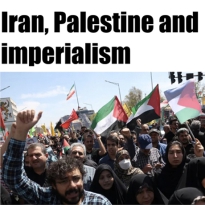Arts
You are here
Capharnaüm, a film of chaos and miracles

February 20, 2019
The film Capharnaüm, nominated for an Academy Award for best foreign-language film, tells the story of undocumented refugees and migrants in Beirut, from the perspective of children. It would be an incredible film to watch even if you didn’t know it was made almost entirely with non-actors.
I didn’t know when I watched it, and was amazed that such real performances were possible, especially from small children. But when I learned that they were just telling their own stories within a fictionalised plot, it all made sense. As the New York Times put it, “Capharnaüm is not just a film, but a rallying cry.”
The director, Nadine Labaki, tells real stories, because in her words, not only are those stories more interesting than art, they are stories that need to be told. She wanted to tell the story of children who don’t understand why they are displaced by war, born into poverty, neglected and mistreated. In interviews about the film she has said that when you ask those children whether they are glad they were born they answer they are not, and wonder why they were born at all.
The premise of the story is a young Lebanese boy who sues his parents for giving birth to him. But as Labaki says in her interview with the New York Times: “he’s actually not only suing his parents, he’s suing the whole system because his parents are also victims of that system – one that is failing on so many levels and that completely ends up excluding people.”
In order to tell this real story, Labaki needed real people to do it, and so she went looking for them. The protagonist, Zain, is played by then 12-year-old Syrian refugee, Zain al Rafeea, who Labaki discovered when he was working as a delivery boy, stealing and begging on the streets of Beirut.
His character in the film ends up as babysitter and then guardian (when the mother in the film disappears) to Boluwatif Treasure Bankole, less than a year old at the time of shooting (playing a boy). She is herself the child of undocumented parents who themselves were arrested during the time of shooting – so she was actually separated from her real mother while playing the role of a child that suffered the same fate in the film.
The fictional mother who disappears, because she is arrested, was also a non-actor and undocumented immigrant who herself was arrested during filming. She told this story during the press conference at Cannes where the film won the Jury prize, and said in tears that the most emotional scene she shot was in the prison – a real prison – where she ran into people she knew.
And Zain’s fictional parents in the film are also real people of Beirut’s poor: the scene in which they reply to the judge about their treatment of Zain and his sister are an improvised response. Labaki told them to just tell the judge (also a real judge) how unfair it is to judge them for their behaviour when they are themselves treated as non-persons, and to speak from their own experience. It is a powerful moment in cinema.
In the words of previous theatre and filmmakers with the same desire to tell real stories and use them to motivate people politically, reality must break down the door of the theatre. Even the music of the film was deliberately played down: in the words of Labaki’s partner and producer who composed it: “music in a film often helps you lie.” He said they watched the film entirely without music and it worked, but that they came to a balance that preserved the sense of reality.
This is the third film Labaki has made with non-professional actors (the other two are Caramel and Where Do We Go Now?) In interviews Labaki has been asked whether she has influences amongst those who have blurred the lines between documentary and fiction in film. To my knowledge she hasn’t cited any, but I see traces of Berthold Brecht, Augusto Boal, and Ken Loach.
Brecht’s theatre was based on the idea that both actors and non-actors could “show” real stories instead of acting them. His analogy for this was a witness explaining a traffic accident: in describing it even to friends, with all the drama of different players in the actual event, you would never try to be something you weren’t in the retelling of it. You would instead tell the story as you saw it, and make it your own as a witness. This is a technique the Canadian playwright Dave Fennario has tried to bring to contemporary Canadian theatre.
In film, the socialist UK director Ken Loach has worked with non-professional actors to tell real stories, and in his film about the Spanish Civil War, Land and Freedom, he created a whole scene for real people to improvise on their own, in their own voices, to not act, but show how a debate about redistribution of land expropriated from landlords might have unfolded in reality.
This film also makes me think of Augusto Boal, who developed a concept of Theatre of the Oppressed with detailed techniques to help ordinary, sometimes traumatised people figure out how to bring their difficult stories to the stage. In his 1992 Games for Actors and Non-Actors he states:
“A session of Theatre of the Oppressed has no end, because everything which happens in it must be extended into life…The Theatre of the Oppressed is located precisely on the frontier between fiction and reality – and this border must be crossed. If the show starts in fiction, its objective is to become integrated into reality, into life.”
I believe this was Nadine Labaki’s intention with her film Capharnaüm. Whether it wins accolades from the Academy or not, it is a beautiful telling of a side of the story that needed to be told. And hopefully a rallying cry against a system that robs too many children of the feeling that it is good to be alive.
Section:
Topics:










